Nationality British Net worth 5 billion USD (2015) Role Inventor | Name James Dyson | |
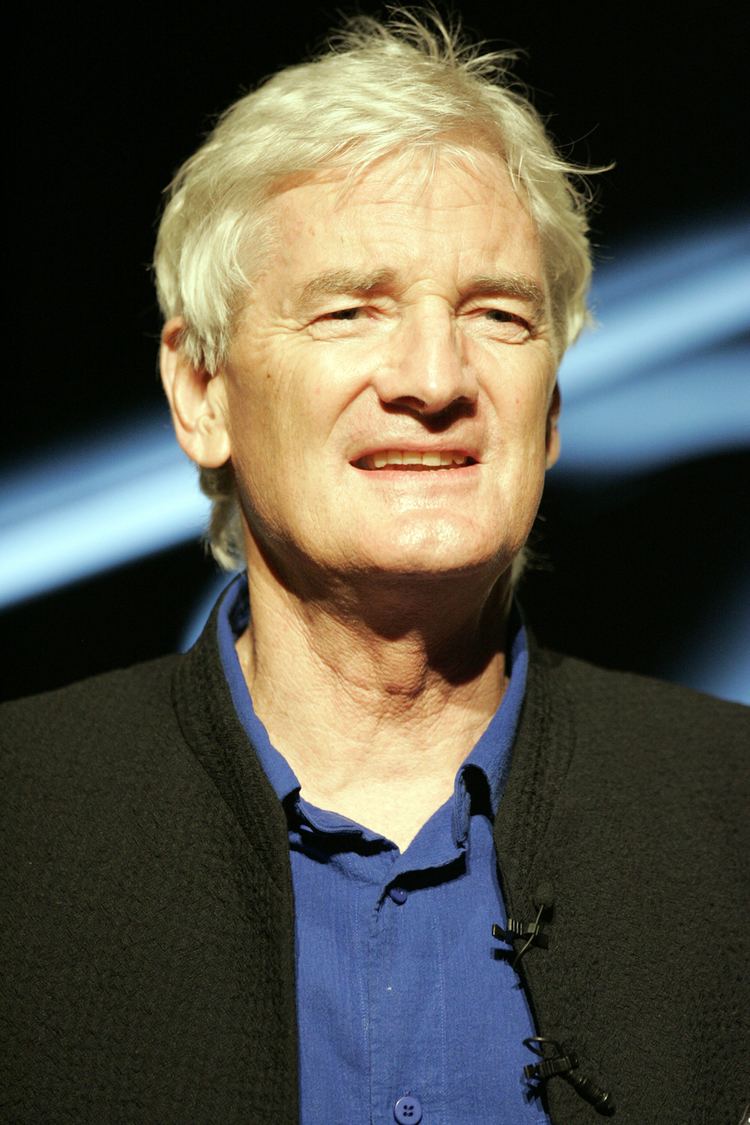 | ||
Alma mater Byam Shaw School of ArtRoyal College of Art Occupation Inventor, industrial designer, founder of the Dyson company Spouse Deirdre Hindmarsh (m. 1968) Children Emily Dyson, Sam Dyson, Jake Dyson Books Against the Odds, A history of great inventions, James Dyson's History of Similar People Richard Branson, Jonathan Ive, Max Conze | ||
James dyson on the art of invention abc news 24
Sir James Dyson (born 2 May 1947) is a British inventor, industrial designer and founder of the Dyson company. He is best known as the inventor of the Dual Cyclone bagless vacuum cleaner, which works on the principle of cyclonic separation. According to the Sunday Times Rich List 2017, his net worth is £7.8 billion. He served as the Provost of the Royal College of Art from August 2011 to July 2017, and opened a new University on Dyson's Wiltshire Campus in September 2017.
Contents
- James dyson on the art of invention abc news 24
- 2014 james dyson award winner explains his invention
- Early life and education
- Early inventions
- Vacuum cleaners
- Other inventions
- Research and development
- Europe
- James Dyson Foundation
- Honours and awards
- Personal life
- References
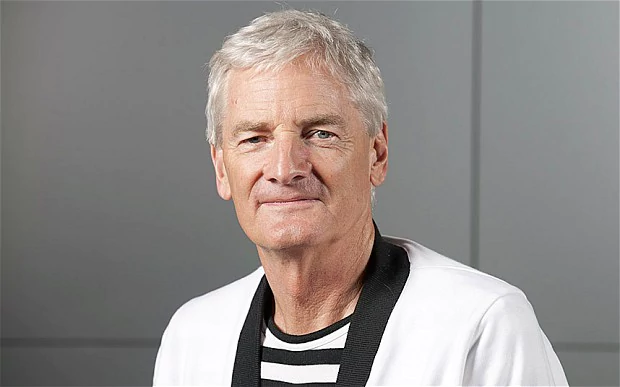
2014 james dyson award winner explains his invention
Early life and education
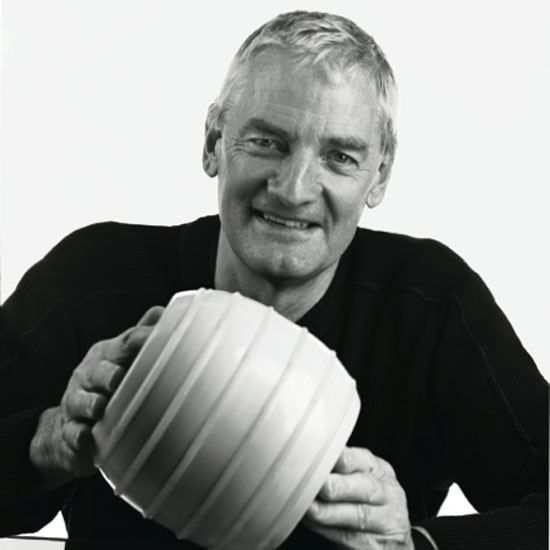
James Dyson was born in Cromer, Norfolk, one of three children. He was educated at Gresham's School, an independent boarding school in Holt, Norfolk, from 1956 to 1965, when his father died of cancer. He excelled at long distance running: "I was quite good at it, not because I was physically good, but because I had more determination. I learnt determination from it." He spent one year (1965–1966) at the Byam Shaw School of Art, and then studied furniture and interior design at the Royal College of Art (1966–1970) before moving into engineering.
Early inventions

Dyson helped design the Sea Truck in 1970 while studying at the Royal College of Art. His first original invention, the Ballbarrow, was a modified version of a wheelbarrow using a ball instead of a wheel. This was featured on the BBC's Tomorrow's World television programme. Dyson stuck with the idea of a ball, inventing the Trolleyball, a trolley that launched boats. He then designed the Wheelboat, which could travel at speeds of 64 kilometres per hour (40 mph) on both land and water.
Vacuum cleaners
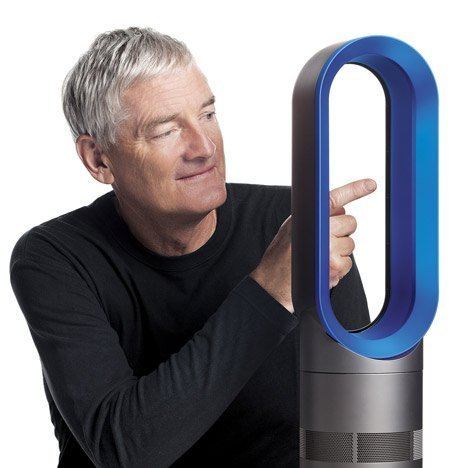
In the late 1970s, Dyson had the idea of using cyclonic separation to create a vacuum cleaner that would not lose suction as it picked up dirt. He became frustrated with his Hoover Junior's diminishing performance: the dust bag kept becoming clogged with loads of dust thus reducing suction. The cyclone idea came from a sawmill that used cyclone technology (qv. History of Dyson Ltd).
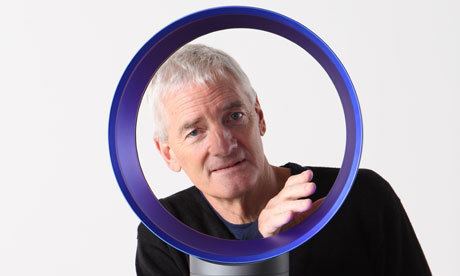
Partly supported by his wife's salary as an art teacher, and after five years and about 5,100 prototypes, Dyson launched the "G-Force" cleaner in 1983. However, no manufacturer or distributor would handle his product in the UK, as it would disturb the valuable market for replacement dust bags, so Dyson launched it in Japan through catalogue sales. Manufactured in bright pink, the G-Force sold for the equivalent of £2,000. It won the 1991 International Design Fair Prize in Japan. He obtained his first US patent on the idea in 1986 (U.S. Patent 4,593,429).
After failing to sell his invention to the major manufacturers, Dyson set up his own manufacturing company, Dyson Ltd. In June 1993, he opened his research centre and factory in Malmesbury, Wiltshire.
Dyson's breakthrough in the UK market came more than ten years after the initial idea, through a TV advertising campaign in which it was emphasised that, unlike most of its rivals, the Dyson vacuum did not require the continuing purchase of replacement bags. At that time, the UK market for disposable cleaner bags was £100 million. The slogan "say goodbye to the bag" proved more attractive to the buying public than a previous emphasis on the suction efficiency that its technology delivers. Ironically, the previous step change in domestic vacuum cleaner design had been the introduction of the disposable bag – users being prepared to pay extra for the convenience. The Dyson Dual Cyclone became the fastest-selling vacuum cleaner ever made in the UK, and outsold those of some of the companies that rejected his idea, becoming one of the most popular brands in the UK. In early 2005, it was reported that Dyson cleaners had become the market leaders in the United States by value (though not by number of units sold).
Dyson licensed the technology in North America from 1986 to 2001 to Fantom Technologies, after which Dyson entered the market directly.
Following his success, other major manufacturers began to market their own cyclonic vacuum cleaners. In 1999 Dyson sued Hoover (UK) for patent infringement. The High Court ruled that Hoover had deliberately copied a fundamental part of his patented designs in making its Triple Vortex bagless vacuum cleaner range. Hoover agreed to pay damages of £4 million.
In 2005, Dyson incorporated the wheel ball from his Ballbarrow concept into a vacuum cleaner, creating the Dyson Ball. This ball, rather than the static wheels on existing vacuums, enabled it to become more steerable, which was more useful for navigating around obstacles and corners.
In mid-2014, Dyson personally appeared in Tokyo to introduce his "360 Eye" robotic vacuum cleaner. Dyson's initial entry into this market segment features 360° scanning and mapping for navigation, cyclonic dust separation, a custom-designed digital motor for high suction, tank treads for traction, a full-width brushroll bar, and user interface via a free iOS or Android app.
Other inventions
In 2000, Dyson expanded his appliance range to include a washing machine called the ContraRotator, which had two rotating drums moving in opposite directions. The range was decorated in the usual bright Dyson colours, rather than the traditional white, grey or black of most other machines. The item was not a commercial success, and is no longer available.
In 2002, Dyson created a realisation of the optical illusions depicted in the lithographs of Dutch artist M. C. Escher. Engineer Derek Phillips was able to accomplish the task after a year of work, creating a water sculpture in which the water appears to flow up to the tops of four ramps arranged in a square, before cascading to the bottom of the next ramp. The creation titled Wrong Garden, was displayed at the Chelsea Flower Show in 2003. The illusion is accomplished with water containing air bubbles pumped through a chamber underneath the transparent glass ramps to a slit at the top from which the bulk of the water cascades down. This makes it appear that the water is flowing up, when really, a small amount of water diverted from the slit at the top flows back down the ramps in a thin layer.
In October 2006 Dyson launched the Dyson Airblade, a fast hand dryer that uses a thin sheet of moving air as a squeegee to remove water, rather than attempting to evaporate it with heat. This allows faster drying, while using much less energy than traditional electrical hand dryers.
Another product is a fan without external blades, which he calls the "Air Multiplier". In addition to a cooling fan, a model which distributes electrically produced heat and an ultrasonic humidifier model are also available.
In April 2016, Dyson launched the Dyson Supersonic, a hair dryer with a smaller motor located in the handle so as to provide better balance and smaller size, as well as quieter operation. Commenting on the launch Vogue magazine said "as the first product to launch from Dyson's new UK state-of-the-art hair laboratory, we have high hopes for the future of our blow-dries."
Research and development
In 2017 Dyson is spending £7m a week on research and development of new products. The company is the UK’s biggest investor in robotics and artificial intelligence research, employing over 3,500 engineers and scientists, and engaging in more than 40 university research programmes. Speaking to the Daily Telegraph, Sir James Dyson said, “We’re looking at more non-domestic products but we are not rushing to do lots of different things,” he said. “We are a private company so we can do it when we are ready.”
In February 2002, Dyson announced that assembly was being shifted to Malaysia leaving 560 workers redundant in 2002 for economic reasons and because of difficulty acquiring land for expansion. The company's headquarters and research facilities remained in Malmesbury and have expanded significantly since.
In November 2014, Dyson announced plans to invest a further £1.5bn into the research and development of new technology, including funding for an expanded campus at the Dyson UK headquarters in Malmesbury which will create up to 3,000 jobs.
Former Prime Minister David Cameron, said: “Dyson is a great British success story and the expansion of the Malmesbury campus will create thousands of new jobs, providing a real boost to the local economy and financial security for more hardworking families. Investment on this scale shows confidence in our long-term economic plan to back business, create more jobs and secure a brighter future for Britain.”.
On 1 March 2016 James Dyson announced a second new multi million-pound research and development centre on a 517-acre former Ministry of Defence (MoD) site at Hullavington, Wiltshire. The technology and electronics company said it aimed to double its UK based workforce in the next five or six years. Sir James said: "After 25 years of UK growth, and continuing expansion globally, we are fast outgrowing our Malmesbury Campus. To win in the world stage you have to develop new technology and develop great products and that's what we're doing here.".
Europe
Dyson was one of the most prominent UK business leaders to publicly support Brexit before the referendum in June 2016. Since the EU referendum, Dyson has stated that Britain should leave the EU Single Market and that this would "liberate" the economy and allow Britain to strike its own trade deals around the world. During 2016, 19% of Dyson Ltd.exports went to EU countries (at WTO tariffs), compared with 81% to non-EU countries. In 2017, Dyson suggested that the UK should leave the EU without an interim deal and that "uncertainty is an opportunity". Previously, in 2014, Dyson had said he would be voting to leave the European Union to avoid being "dominated and bullied by the Germans".
In November 2015, Dyson lost his case against EU energy labelling laws in the European General Court, however a subsequent appeal in the European Court of Justice said that the previous ruling had “distorted the facts” and “erred in law”.
In 1998, Dyson was one of the chairmen and chief executives of the twenty FTSE 100 companies who signed a statement published in The Financial Times calling on the government for early British membership of the Eurozone. He claimed that failure to join the euro would lead to the destruction of the British manufacturing base and said: "It does not mean that the jobs will go tomorrow but will drift abroad over a period and the longer-term future of Britain as a manufacturing nation will be blighted. Ministers had better understand that if we delay entry too long there may be nothing left to save."
James Dyson Foundation
Dyson set up the Foundation in 2002 to support design and engineering education – it now operates in UK, US and Japan. The Foundation's aim is to inspire young people to study engineering and become engineers by encouraging students to think differently and to make mistakes. The Foundation supports engineering education in schools and universities, as well as medical and scientific research in partnership with charities. It achieves this by funding different resources such as the "Engineering Box", a box filled with activities for a school to use as a teaching aid. The Foundation loans the boxes to schools for four weeks free of charge, they are suitable for Key Stage 4 and above. The Engineering Box enables students to take apart and examine a Dyson DC22 Telescope vacuum cleaner. In addition, a school is allowed to retain a James Dyson Foundation teacher pack, and a copy of Genius of Britain, a Channel 4 TV series featuring Dyson, and design engineering posters. Other resources are also available.
In May 2014, the Foundation announced an £8m donation to create a technology hub at the University of Cambridge. A new four-storey building will house 1,200 postgraduate engineers and support world-leading research. The donation will also allow for a design and making lab to be developed for undergraduate engineering students.
In March 2015, the James Dyson Foundation pledged a £12m donation to Imperial College London to allow the purchase of an iconic Post Office building (located on Exhibition Road) from the Science Museum. Imperial College will open the Dyson School of Design Engineering in this building, and teach a new four-year Masters course in design engineering, developing a new cohort of creative and theoretical engineers.
The Foundation also supports the work of young designers through the James Dyson Award. This is an international design award that "celebrates, encourages and inspires the next generation of design engineers". It is run in twenty countries and is open to recent graduates in product design, industrial design, and engineering.
Honours and awards
In 1997, Dyson was awarded The Prince Philip Designers Prize. Dyson was appointed a Commander of the Order of the British Empire (CBE) in the 1998 New Year Honours. In 2000, he received the Lord Lloyd of Kilgerran Award. He received an Honorary DEng degree from the University of Bath in 2000. In 2005, he was elected a Fellow of the Royal Academy of Engineering (FREng). He was appointed a Knight Bachelor in the 2007 New Year Honours. Since 2011 he has been Provost of the Royal College of Art. Dyson was elected a Fellow of the Royal Society (FRS) in 2015. In the 2016 New Year Honours, Dyson's appointment to the Order of Merit (OM) was announced for "contributions and achievements in industrial design". 2017: IEEE Honorary Membership. In March 2017 Dyson was voted the most reputable company in the UK followed by Aston Martin.
Personal life
Dyson married Deirdre Dyson (née Hindmarsh) in 1968. The couple have three children. In 2003, Dyson paid £15 million for Dodington Park, a 300-acre (1.2 km2) Georgian estate in South Gloucestershire close to Chipping Sodbury. He and his wife also own Domaine des Rabelles, near Tourtour, France, and a townhouse in Chelsea, London. His vessel Nahlin is the largest British-flagged and owned super yacht with an LOA of 91 metres (299 ft), and was ranked 36th in a 2013 survey of the world's 100 biggest yachts.
Dyson is Provost of the Royal College of Art in London, having succeeded Sir Terence Conran in August 2011, and is Patron of the Design & Technology Association. He was chair of the board of trustees of the Design Museum, "the first in the world to showcase design of the manufactured object", until suddenly resigning in September 2004, stating the museum had "become a style showcase" instead of "upholding its mission to encourage serious design of the manufactured object".
